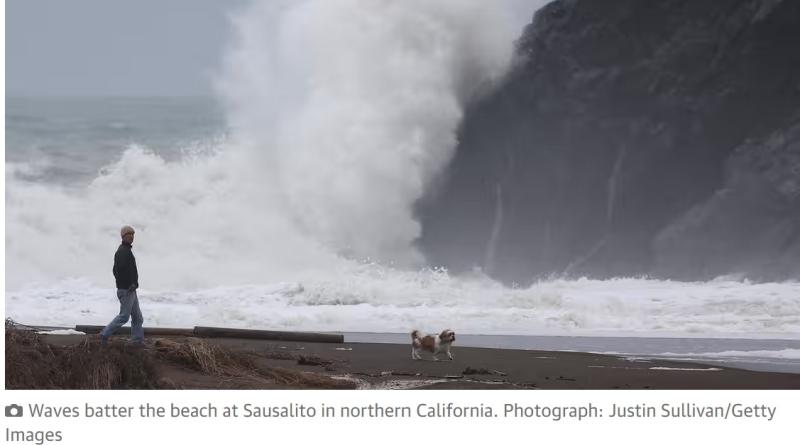Ocean spray emits more PFAS than industrial polluters, study finds

Ocean waves crashing on the world’s shores emit more PFAS into the air than the world’s industrial polluters, new research has found, raising concerns about environmental contamination and human exposure along coastlines.
The study measured levels of PFAS released from the bubbles that burst when waves crash, spraying aerosols into the air. It found sea spray levels were hundreds of thousands times higher than levels in the water.
The contaminated spray likely affects groundwater, surface water, vegetation, and agricultural products near coastlines that are far from industrial sources of PFAS, said Ian Cousins, a Stockholm University researcher and the study’s lead author.
“There is evidence that the ocean can be an important source [of PFAS air emissions],” Cousins said. “It is definitely impacting the coastline.”
PFAS are a class of 15,000 chemicals used across dozens of industries to make products resistant to water, stains and heat. Though the compounds are highly effective, they are also linked to cancer, kidney disease, birth defects, decreased immunity, liver problems and a range of other serious diseases.
They are dubbed “forever chemicals” because they do not naturally break down and are highly mobile once in the environment, so they continuously move through the ground, water and air. PFAS have been detected in all corners of the globe, from penguin eggs in Antarctica to polar bears in the Arctic.
The Stockholm researchers several years ago found that PFAS from ocean waves crashing are released into the air around shorelines, then can travel thousands of kilometers through the atmosphere before the chemicals return to land.
The new research looked at levels in the sea spray as waves crash by testing ocean samples between Southampton in the UK and Chile. The chemicals’ levels were higher in the northern hemisphere in general because it is more industrialized and there is not much mixing of water across the equator, Cousins said.
It is unclear what the findings mean for human exposure. Inhalation of PFAS is an issue, but how much of the chemicals are breathed in, and air concentrations further from the waves, is still unknown.
Previous non-peer-reviewed research has found a correlation between higher PFAS levels in vegetation samples and proximity to the ocean, Cousin said, and his team is undertaking a similar study.
He said that the results showed how the chemicals are powerful surfactants that concentrate on the surface of water, which helps explain why they move from the ocean to the air and atmosphere.
“We thought PFAS were going to go into the ocean and would disappear, but they cycle around and come back to land, and this could continue for a long time into the future,” he said.




